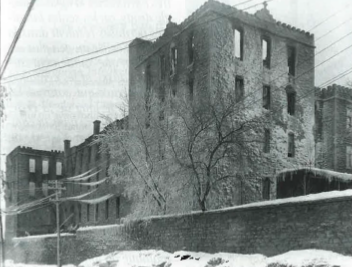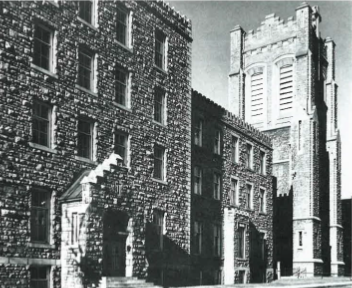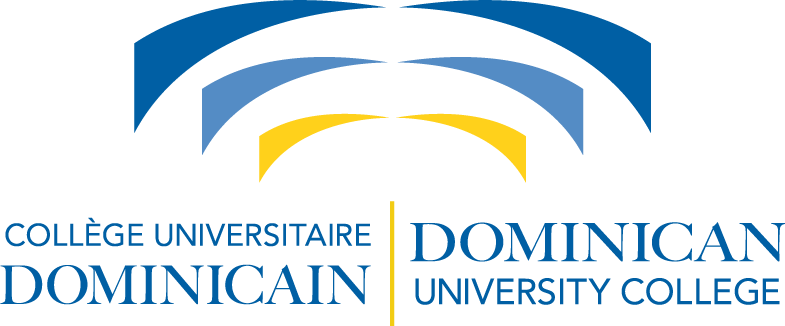History
 DUC is heir to one of the oldest university models that originated in Western culture. Born in the first part of the thirteenth century, at the same time as the institution of the university itself, the studium generale was a center of intellectual life, specializing most often in philosophy and theology.
DUC is heir to one of the oldest university models that originated in Western culture. Born in the first part of the thirteenth century, at the same time as the institution of the university itself, the studium generale was a center of intellectual life, specializing most often in philosophy and theology.
 This model of studium generale was adopted by the Order of Preachers (later known as Dominicans), founded by Domingo de Guzmán in 1215. Established in Paris in 1229, the first studium generale of the Order, where Thomas Aquinas himself received his basic formation in philosophy and theology, was followed by four others in 1245, in Cologne (Germany), Bologna (Italy), Oxford (England) and Montpellier (France). Inheriting this long and rich intellectual tradition, the model has always been maintained by the Order throughout the centuries. In Canada, the institutional center of studies of the Order was established in Ottawa in 1900 and was officially recognized as studium generale ten years later.
This model of studium generale was adopted by the Order of Preachers (later known as Dominicans), founded by Domingo de Guzmán in 1215. Established in Paris in 1229, the first studium generale of the Order, where Thomas Aquinas himself received his basic formation in philosophy and theology, was followed by four others in 1245, in Cologne (Germany), Bologna (Italy), Oxford (England) and Montpellier (France). Inheriting this long and rich intellectual tradition, the model has always been maintained by the Order throughout the centuries. In Canada, the institutional center of studies of the Order was established in Ottawa in 1900 and was officially recognized as studium generale ten years later.
DUC is housed in a grey stone heritage building, the Saint Jean-Baptiste Dominican convent, with its own church of the same name. Although it seems hard to believe it now but the formidable structure, proudly perched on top of Primrose hill, overlooking LeBreton Flats, was not always as invincible as it may appear at first sight. On the terrible night of February 8, 1931, fire destroyed St. Jean-Baptiste church and a part of the west wing of the old convent. A year later, on Easter of 1932, the newly rebuilt convent and church were officially inaugurated.

“Let me see this fortress, massive and square, with dark grey stone, a perfect quadrilateral where the supreme intractable line and angle reign… and it looks like a medieval stronghold of The Truth”, Georges-Henri Lévesque, O.P., remembers seeing the new building for the first time (1).

DUC boasts its own star power with the names of the world famous philosophers Étienne Gilson and Jacques Maritain forever tied to the history of the institution. In 1934, the French Catholic philosopher Jacques Maritain visited the college and gave three lectures on “the major intellectual positions of the Ancient, Christian, and Modern world with regard to science and wisdom” (2).

And in 1935 the “immortal” member of Académie française, the French Thomist philosopher Étienne Gilson, started his collaboration with the Institute for Medieval Studies (relocated to Montreal since) housed by what would later become DUC where he delivered three lectures on “Duns Scotus and the theoremata” (3).
Thomistic thought is to date the solid foundation that connects the two DUC faculties, Philosophy and Theology, as well as bridges DUC with other Dominican universities in the US and Europe.
In 1967, after having been granted a civil university charter by the Ontario Government, the university became the Collège dominicain de philosophie et de théologie. Thereafter, the university was able to welcome non-Dominican students and grant civil university degrees in philosophy and theology.
DUC has grown steadily, especially with the opening of the English undergraduate programs in philosophy in 1992, and in theology in 2003. DUC has been offering bilingual graduate programs in philosophy since 1997 and in theology since 2007.
In May 2012, DUC was formally affiliated with Carleton University. Shortly thereafter, the institution officially adopted the name Dominican University College - Collège universitaire dominicain. In cooperation with Carleton University, DUC successfully completed two cycles of its Institutional Quality Assurance Process (IQAP), respectively, in 2013 and 2017. All graduate and undergraduate programs in philosophy and theology are fully accredited and funded by the Ministry of Colleges and Universities.
1) Koinônia 2000, numéro 17, édition spécial, mai 2000, p. 32.
2) Koinônia 2000, numéro 17, édition spécial, mai 2000, p. 36.
3) Ibid.

